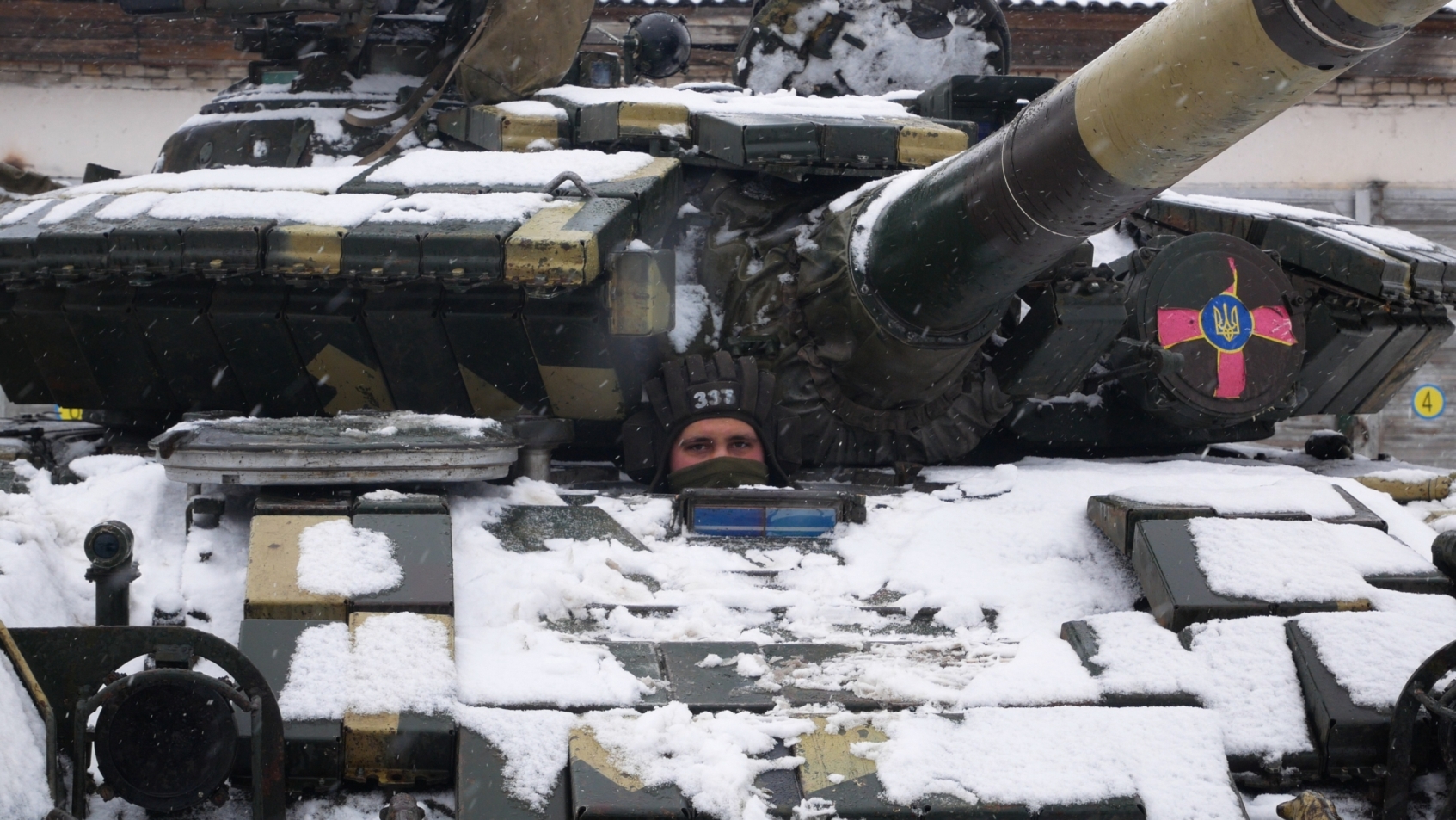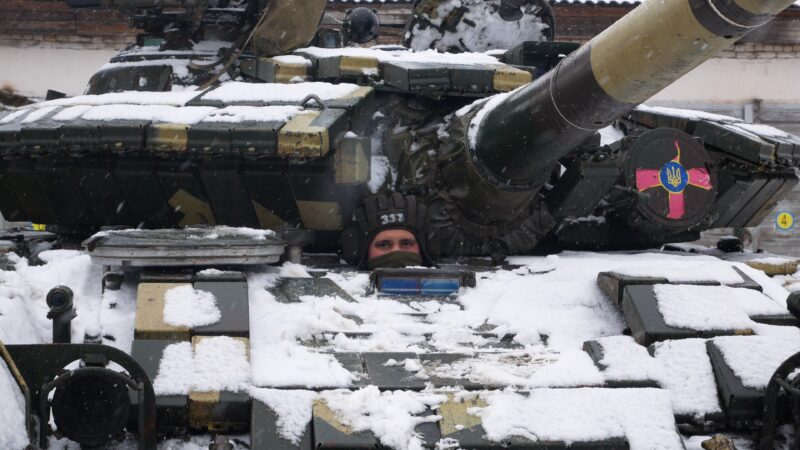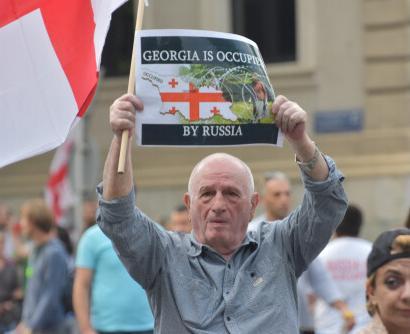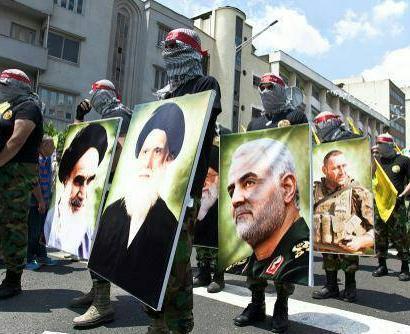Abstract: Initial setbacks in Russia’s invasion of Ukraine has exposed both Russian weaknesses and Ukrainian strengths. Having taken an operational pause and adapted to the reality of conflict in Ukraine, Russia seems set to win a slow, ugly war. After five weeks of fighting, this invasion provides valuable lessons for Western states. First, unlike the two countries directly involved, no Western state is as prepared as Ukraine or cowed by its political system as Russia. These factors make it possible for Ukraine and Russia to accept the heavy losses of life and property witnessed so far. It may be worth considering if any western states could endure the same.
Additionally, open-source intelligence shows significant military and other resources losses for both sides. The fighting in Ukraine suggests that Western states could be in for a torrid time if victory is not attained quickly in a conflict between comparable forces. Such a prognosis may be acutely so in Europe, where the post-Cold War military experience has been one of low-intensity conflict in places of our choosing.
Bottom-line-up-front: Western states must re-engage in discourse to prepare their populations and industries to endure potential drawn-out and ugly conflicts against comparable states and powers.
Problem statement: If it is possible for the West to overestimate Russian operational abilities for a quick and decisive military victory, is it then possible, or likely, that the West is overestimating its own competencies? If so, what is the right approach to this problem?
So what?: Western states should reconsider their defence plans in light of the Ukrainian experience. Emphasis should be on military and psychological resilience to survive potential attrition warfare with comparable powers.
Authors note: As The Defence Horizon Journal strives to maintain academic standards, and avoids hastily publishing works, the numbers I have quoted below may change by the time this paper goes to publication. I ask the reader to consider this variation as a cost worth bearing in the pursuit of rigorous analysis.

Source: shutterstock.com/Seneline
Russia’s Invasion
At 0500hrs (CET) on 24 February 2022, Russian President Vladimir Putin announced that Russian forces would commence what he termed a “special military operation” to “denazify” and “demilitarise” Ukraine. This action has returned interstate warfare to Europe. Ukraine has become the first European state in nearly 80 years to fight a war that is both one of national survival and not of its own making. Unlike the major European powers’ military adventures — in Afghanistan, Libya, the Balkans— Ukraine has not chosen this war. Furthermore, it is not within Ukraine’s capacity—as much as we wish it were otherwise—to extract itself from this conflict without compromise or calamity.
Ukraine has become the first European state in nearly 80 years to fight a war that is both one of national survival and not of its own making.
Russian forces undertook a speedy combined-arms assault advancing from the Ukraine-Belarus border towards the Ukrainian capital Kyiv; then, from the east towards Kharkiv and Sumy, with breakouts from the breakaway regions of Luhansk and Donetsk; and finally, from the south, there were thrusts from Russian-held Crimea, which targeted the southern cities of Mariupol in the east and Kherson in the west.
Due to Kremlin intransigence, it is difficult to ascertain the underlying objectives of the invasion. Does the Kremlin want to reintegrate Ukraine into a greater pseudo-tsarist Russia? Does it want to install a weak vassal beholden to its whims? Does it want to exterminate the Ukrainian people? Although there is no clear answer to these questions, we can infer from the forces arrayed for the invasion that Russia seemed to count on a speedy victory. Russian forces made lightning dashes for Kyiv, Kherson, and Kharkiv. The attempt to stun through speed is discernible in Russia’s repeated high-cost attempts to take Hostomel airport, including a spectacular raid by Russian paratroopers of the VDV (Vosduschno-Dessantnyje Voiska; Russian Airborne Forces) on the first day of the conflict. Whilst Russia has succeeded in capturing Hostomel, the destruction caused by fighting has rendered it operationally useless.
Further evidence of Russia’s desire for swift victory is the deployment of a force estimated to range from 175,000 to 190,000 troops in 120 battalion tactical groups (BTGs).[1] BTGs are Russia’s primary high-readiness combat formations. These are units that Russia supposedly trains and maintains at peak operational condition. A BTG usually comprises a mechanised infantry battalion of two to four rifle companies reinforced by air-defence, artillery, engineering, and logistical support units. They are generally supported by a tank company and rocket artillery, thus making them self-contained combined-arms units. The number of BTGs deployed in and around Ukraine is significant, as it is believed that Russia possesses between 136-168 BTGs.[2] Such a high level of investment of strategic assets without calling up reserves indicates that perhaps Russia’s decision-makers thought they could strong-arm the Ukrainians without extensive fighting or that the war would be short if it were to materialise.[3] Nonetheless, neither of these expectations has come to pass.
A BTG usually comprises a mechanised infantry battalion of two to four rifle companies reinforced by air-defence, artillery, engineering, and logistical support units. They are generally supported by a tank company and rocket artillery, thus making them self-contained combined-arms units.
Ukrainian defence is further compromised as Russian land forces are supported by up to 300 combat aircraft near Ukraine.[4] However, most of these have remained inexplicably un-committed as the war has transpired. However, it is unlikely that this will persist as Ukrainian aircraft and missile stocks are relatively inferior.
Additionally, Russia has supported its operations with the Black Sea Fleet. The Black Sea Fleet is larger and more modern than Ukraine’s small navy, with one frigate—now scuttled—and about a dozen patrol boats. The Black Sea Fleet has experienced a decade of modernisation, including several vessels armed with Kalibr supersonic cruise missiles. Kalibr cruise missiles were launched from the Black Sea and struck targets during the invasion in support of the Russian ground offensive.[5]
Against a seemingly large modern foe, the Ukrainian Army ranges between 170,000 and 196,000 troops, making it ostensibly comparable to the Russian force arrayed against it.[6] Whilst there may be local parity in numbers, Russia can call upon more significant reserves of troops and weapons. Furthermore, as Ukraine must defend a wide swath of territory, its forces are widely dispersed, thus giving the invaders a significant degree of flexibility.
As the war has dragged on, we can see that Russia’s lightning blow has failed to land despite having a favourable disparity in forces and dispositions. As we enter the sixth week of the war, any hope of a swift military resolution is dissipating fast. The reasons for this are legion; residing in equal parts in the Churchillian resolve of Ukrainian President Volodymyr Zelensky and demoralised Russians’ unwillingness to fight, in addition to Putin’s will to continue the attack, as well as the West’s willingness to bankroll Ukraine’s attempts at fending off the invaders.
The conduct of the Ukrainian Government throughout the invasion is manifest in its people’s willingness to resist occupation. Whilst we may seek to laud this response, we must acknowledge two key factors: one, Ukrainians’ physical and psychological resistance will not last if the war turns even more ugly—as it might; two, this will was built on confidence cultivated through eight years of combat experience in the separatist regions of Donetsk and Luhansk, and a long-term military preparation aided through Western interactions. Accordingly, these factors may help analyse this current conflict’s role in the West’s future defence planning.
The Willingness to Resist
The first factor is important to consider from a Western perspective. As Westerners, we are widely considered to have become soft, used to the good life, or more pertinently, living in Edward Luttwak’s post-heroic age.[7] For most Westerners, conflict and political violence are abstractions. We, collectively, do not face death, disfigurement, and destitution regularly. When we do, it is oft through seemingly individual, as opposed to objectively societal, failings. This begs the following question: should we face a period of violent crisis, are we resilient enough to endure it as a collective? Whilst we may say yes, the fact is that in Europe, many countries are suffering from distinct levels of political polarisation, which may weaken social bonds, or worse, serve as the locus for bad-faith actors to dismember these societies. This might seem like fantastical fearmongering; however, one must keep in mind that this is what Russia has been doing in Ukraine for over a decade.
Should we face a period of violent crisis, are we resilient enough to endure it as a collective?
Additionally, we may try to excuse this conflict as some communist-era hangover. However, we see this writ large across Europe, with many polarised political parties and organisations that receive funds from Moscow.[8] Thus, it is imperative that we, as Westerners, learn to get along with our ‘international compatriots’ regardless of their place on the political spectrum—we should work to prevent minor cracks from becoming major faults. Further, we must acknowledge that whilst we are blessed to live in a peaceful and prosperous part of the world, past generations’ suffering painstakingly buttressed it, and we have no inherent right to this. We must learn to collaborate better and acknowledge that, eventually, we may have to fight to defend our way of life.
The second factor mentioned above is probably less abstract and far more critical. As we are witnessing, Ukraine has acquitted itself nobly in its efforts to repulse the invaders. Unfortunately, despite their best efforts, this will likely prove a task beyond their abilities. However, we must acknowledge that this resistance did not grow overnight. Ukraine has been preparing for invasion since the outbreak of conflict in Donetsk and Luhansk in 2014. Ukraine’s preparations include a combination of real operational experience gained through the conflict in eastern parts of the country and a new focus on adhesion to NATO standards and practices.[9] These efforts have borne fruit, as is evident in the current successes of Ukraine’s forces’ coordination of complex operations across various fronts. It is probably fair to say that the best example of this is Ukrainian Special Operating Forces (SOF) raiding Russian logistic columns.
Ukraine has been preparing for invasion since the outbreak of conflict in Donetsk and Luhansk in 2014. Ukraine’s preparations include a combination of real operational experience gained through the conflict in eastern parts of the country and a new focus on adhesion to NATO standards and practices.
Furthermore, Ukraine is beset by several factors that have impeded her progress and these will, undoubtedly, dampen her ability to ride out the war. First, despite the eight years of preparation, Ukraine is beset by corruption and factionalism. The latter is exemplified by the long existence of pro-Russian parties, such as the ‘Opposition Block’ or its predecessor, the Party of Regions. A recent example of the cleavage in Ukrainian society is the killing of Denis Kireev, a member of the Ukrainian negotiating team. Initial reports claimed that Ukrainian police killed Kireev as a Russian spy.[10] Subsequent reports claim he was killed in the line of duty. Whilst the truth may not be known for some time, this incident and the fact that Kireev could be considered a pro-Russian agent in such a position casts a light on the fissures in Ukrainian politics.
Second, Ukraine does not manufacture small arms ammunition domestically.[11] This may seem unlikely; however, the Ukrainian plant that manufactures small arms ammunition is based in the separatist region of Luhansk. Thus, Ukraine is dependent on the West for modern anti-tank weapons and small arms ammunition.
Despite these setbacks, thus far, Ukraine has managed to wage a creditable campaign against the Russians, inflicting significant losses among Russian troops and equipment. At the time of writing (27 March), the Kremlin has acknowledged 1,351 Russians killed in Ukraine while the Ukrainian Government claims to have killed up to 16,600 Russian troops.[12] In all likelihood, Russia and Ukraine are understating and exaggerating these figures, respectively. However, we are five weeks into a war that has killed a number of troops that may be equal to, or a significant portion of, the total US losses in Afghanistan over nearly 20 years. [13] As for Russia, we can speculate that their losses are substantial, based on the attrition of combat vehicles. Various open sources detail Russian losses of vehicles running into the high hundreds and low thousands.[14] The number of Russian losses confirmed through sources, such as Ukraine Weapons Tracker or Oryx, shows significant Russian losses.[15] Additionally, whilst Ukraine is unhesitatingly providing lists of Russian losses of both troops and equipment, it has remained coy about its own losses. Similarly, open sources indicate heavy losses in this case and considering Ukraine’s relatively minor arsenal, we may consider such losses, particularly in air power, more significant.
Is the West Prepared for War?
Considering the fact that Ukraine has been preparing, both physically and psychologically, for this war for eight years. It is easy to see why the Ukrainian armed forces and, more generally, the population have remained resilient. Could a Western state, such as Poland or Sweden, bear similar levels of damage and endure? Probably not.
As mentioned previously, the West is enduring a prolonged period of polarisation. We can see fissures between the EU and the UK and the rise of Euroscepticism in the Visegrad states — ironically, the war in Ukraine is exposing fissures in the Visegrad states, with the Czech Minister for Defence refusing to meet her Hungarian counterpart. Ending such polarisation at the national and regional levels is vital if Europe is ever to achieve its ambitions to become a meaningful security actor.
Ironically, the war in Ukraine is exposing fissures in the Visegrad states, with the Czech Minister for Defence refusing to meet her Hungarian counterpart.
Additionally, the West in general, and Europe in particular, has ‘benefitted’ from a so-called ‘peace dividend’ brought by military downsizing caused by the end of the Cold War. European force levels have been denuded to such a parlous state that NATO protects its Baltic allies with the tokenistic Enhanced Forward Presence (eFP) scheme of a 1,500-man battlegroup stationed in each Baltic state plus Poland. Considering this scheme as tokenish may seem harsh, but these numbers are insignificant when considering the historical record of forces deployed to deter the Soviet Union. Proponents argue that EFP is the tip of the spear. However, due to a paucity of resources, it may very well be the shaft because European strategic reserves are excruciatingly insufficient when viewed from a long-term perspective. For example, in the 1980s, West Germany had 7,000 tanks; today, unified Germany has less than 300.[16]
European force levels have been denuded to such a parlous state that NATO protects its Baltic allies with the tokenistic Enhanced Forward Presence scheme of a 1,500-man battlegroup stationed in each Baltic state plus Poland.
In considering the material aspects of modern conflict, we must ask ourselves: is the West militarily robust enough to accept the levels of material loss we see in Ukraine? Looking at the enduring decline in combat power in Europe, this seems unlikely. In five weeks, the Russians (and probably Ukrainians) have lost quantities of arms and equipment that would denude the average NATO state. To put this in context, it is claimed (at time of writing) that Russia has lost between 230 and 400 tanks so far; consider then that Poland’s plan to equip its army with M1 Abrams tanks will top out at 250 tanks, and the UK’s plans for the Challenger 3 will top out at 148. Assuming the Franco-German Main Ground Combat System (MGCS) project — intended to replace Leopard 2 and LeClerc — results in a one-for-one replacement, France and Germany would receive 406 (contingent on replacing those LeClercs placed into long term storage) and 236 new tanks, respectively.
Further, if we accept that Russia has lost 230 tanks up to 27 March (day 32 of the Russian invasion), this equates to a loss rate of 7.18 tanks per day — a rate that has dropped from 10.8 in the first ten days of the fighting.[17] Thus, the Western states detailed above could field armoured formations for 34 days for Poland, 20 for the UK, 56 for France, and 32 for Germany at similar loss rates. This number only accounts for tanks and does consider other vehicles or even logistical sustainment. The numbers from Ukraine show that SOF teams and Territorial Defence units are making life difficult for Russian support troops; this may have severe operational consequences for the invaders.
The Western states detailed above could field armoured formations for 34 days for Poland, 20 for the UK, 56 for France, and 32 for Germany at similar loss rates.
Whilst we may argue that Western forces are better suited to high-end warfare, there is no current data to support this. The last conventional war fought by Western forces was the 2003 invasion of Iraq. While the initial invasion was a spectacular feat of arms; it is essential to recall that Iraq was neither a peer nor a near-peer adversary. It was a rotten, corrupt, petro-state in terminal decline. Thus, there is no objective evidence that western forces will perform magnificently if faced with a mentally robust, well-equipped adversary. Thus, we must acknowledge that we may find ourselves mirroring the Russians in their underperformance because we have not engaged in such a high-tempo conventional war environment.
Further, in the West’s most recent conflicts, local partners often shared logistical burdens, or these burdens were carried at organically enormous expenses. Moreover, in these conflicts, one must realise that Western forces often had a preponderance of combat power and almost exclusive air supremacy. In a conflict against a state with comparable military power, Western forces may neither be able to engage local contractors for logistical support nor benefit from outstanding air capabilities.
In dealing with the psychological impasse inherent in the West, it is hard to say what the solution for this unpreparedness will be. However, at this early stage, it seems that it may be—somewhat ironically—Russian aggression. We can see that there has been an immediate Western closing of ranks and a display of solidarity with Ukraine. What makes this special is that it has not been a NATO or EU-specific response. This solidarity can be seen in widespread condemnation at the EU and UN levels.[18] More importantly, several traditionally neutral states such as Sweden and Finland have publicly announced their material support for the Ukrainian cause.[19] Whilst Switzerland has joined in sanctioning Russia. Whilst these steps are unprecedented, and a lot is being made of them, it remains to be seen whether this support will endure.
Overestimated and Misunderstood
In summary, the Ukraine war thus far has shown that assumptions about Russian prowess for fast-moving complex operations were grossly overestimated, and Russian intentions were misunderstood. We can see that a prepared, determined, and relatively lightly armed opponent can cause significant losses of both troops and equipment. However, we can also see how a determined aggressor may sustain and adapt to such losses. The profusion of commercial sensor systems, such as simple drones and camera phones, in conjunction with the availability of small anti-armour/anti-air systems, suggests that Western forces, operating in a future conflict against a comparable power, may discover that their ability to succeed quickly is as overestimated as that of Russia today.
As a society of like-minded nations, Westerners must realise that we need to overcome our trivial differences to prevent cleavages in our societies, enabling a threat to our way of life. Lastly, we must also ask ourselves, are we willing to pay the price in either soldiers or materiel, to maintain our way of life? Naturally, given that we are blessed to live in a community of nations that holds life dear, we may not be willing to risk our children. Should we wish to avoid such costs, we can embrace the old ship-building adage: air is free, and steel is cheap. That is to say, we see in Ukraine that lack of material leads to loss of life. This is not just a case of a paucity of kits but also a lack of quality.
We must also ask ourselves, are we willing to pay the price in either soldiers or materiel, to maintain our way of life?
In Ukraine, Western states can learn valuable lessons about preparation both mentally and materially that will stand us in good stead, should we find ourselves in a war, not of our choosing.
Dermot Nolan has spent 12 years in the Army Reserve in Ireland, where he served in the Artillery Corps. He holds a master’s degree in Military History and Strategic Studies from the National University of Ireland at Maynooth. In addition, he has a master’s degree in International Relations and International Security from the Rijksuniversiteit Groningen in the Netherlands. His interests are modern land war, airpower, and nuclear deterrence. His work has been published in European Security and Finabel-The European Army Interoperability Centre. The views contained in this article are the author’s alone.
[1] Jim Garamone, Russian Invasion Stalled in Ukraine’s North, Progress in South, DODNews, 3 March, 2022. https://www.defense.gov/News/News-Stories/Article/Article/2954548/russian-invasion-stalled-in-ukraines-north-progress-in-south/#:~:text=Russian%20President%20Vladimir%20Putin%20has,have%20invaded%2C%20the%20official%20said.
[2] Nearly 400,000 contractors serve in Russian army, TASS.com, 11 March, 2019. https://tass.com/defense/1048138 For a brief, easy to comprehend discussion of the BTG see: Kyle Mizokami, How Russia’s Battalion Tactical Groups Will Tackle War With Ukraine. Popular Mechanics, 24 Feb 2022, https://www.popularmechanics.com/military/weapons/a39193732/russian-battalion-tactical-groups-explained/.
[3] For examples of the possibility of no war in Ukraine, we can see reports that Russian soldiers claim they were not told, until the war was begun that they would invade, for example: Luke Harding, Demoralised Russian soldiers tell of anger at being ‘duped’ into war, The Guardian, 04 March, 2022.https://www.theguardian.com/world/2022/mar/04/russian-soldiers-ukraine-anger-duped-into-war.
[4] Justin Bronk, The Mysterious Case of the Missing Russian Air Force, RUSI, 28 February, 2022. https://rusi.org/explore-our-research/publications/commentary/mysterious-case-missing-russian-air-force
[5] Ukraine reports fresh air, cruise missile strikes, Reuters, 26 February, 2022. https://www.reuters.com/world/europe/ukraine-reports-fresh-air-cruise-missile-strikes-2022-02-26/
[6] Factbox: How Ukraine’s armed forces shape up against Russia’s, Reuters, 24 February, 2022. https://www.reuters.com/business/aerospace-defense/how-ukraines-armed-forces-shape-up-against-russias-2022-02-01/.
[7] Edward N. Luttwak, Toward Post-Heroic Warfare, Foreign Affairs, May/June 1995, https://www.foreignaffairs.com/articles/yugoslavia/1995-05-01/toward-post-heroic-warfare
[8] Erik Brattberg, European Lessons for Tackling Election Interference, Carnegie Endowment, 18 August, 2020, https://carnegieendowment.org/2020/08/18/european-lessons-for-tackling-election-interference-pub-82561.
[9] Andriy Zagorodnyuk, Alina Frolova, Hans Petter Midtunn, Oleksii Pavliuchyk, Is Ukraine’s reformed military ready to repel a new Russian invasion?, The Atlantic Council, 23 December 2021, https://www.atlanticcouncil.org/blogs/ukrainealert/is-ukraines-reformed-military-ready-to-repel-a-new-russian-invasion/.
[10] Alex Winter, Ukrainian peace negotiator shot dead amid claims he was a ‘double agent’ News.com, 6 March 2022. https://www.news.com.au/world/europe/ukrainian-peace-negotiator-shot-dead-amid-claims-he-was-a-double-agent/news-story/3109299bd0ee408785154339f29eb4e5.
[11] Cartridge factory in Ukraine: how they are trying to implement the project, Slovoidilo.ua, https://www.slovoidilo.ua/2021/09/03/infografika/bezpeka/patronnyj-zavod-ukrayini-yak-namahayutsya-realizuvaty-proyekt (Google Translation).
[12] For Russian claims see here: https://www.telesurenglish.net/news/Russian-MoD-Offers-Update-on-Casualties-From-Ukraine-Conflict-20220326-0001.html; for Ukrainian, see here: https://www.theguardian.com/world/2022/mar/22/how-many-russian-soldiers-died-ukraine-losses.
[13] Total US casualties for Operations Enduring Freedom and it’s successor Freedom’s Sentinel stand at 2218+107 respectively. See: https://www.defense.gov/casualty.pdf for more information. Given the carnage unfolding in Ukraine, it is entirely possible that this figure has been exceeded by both sides. However, with Ukraine remaining coy on their casualties, and Russian drip-feeding information. It will be some time before this can be confirmed.
[14] For continuous coverage of material losses, see oryxspioenkop.com/2022/02/attack-on-europe-documenting-equipment.html.
[15] Ibid, for live tracking of the conflict so far see https://twitter.com/UAWeapons.
[16] The Bundeswehr in the Cold War, Bundeswehr.de, https://www.bundeswehr.de/en/about-bundeswehr/history/cold-war.
[17] This is the lower end of the numbers provided through Open Sources, as such, it is a conservative estimate. See oryxspioenkop.com/2022/02/attack-on-europe-documenting-equipment.html.
[18] https://www.theguardian.com/world/2022/mar/02/united-nations-russia-ukraine-vote.
[19] Alex Seitz-Wald, ‘A new Europe’ united against Russia — even neutral Switzerland, NBC News, 28 February, 2022, https://www.nbcnews.com/politics/national-security/-new-europe-united-russia-even-neutral-switzerland-rcna18028.






